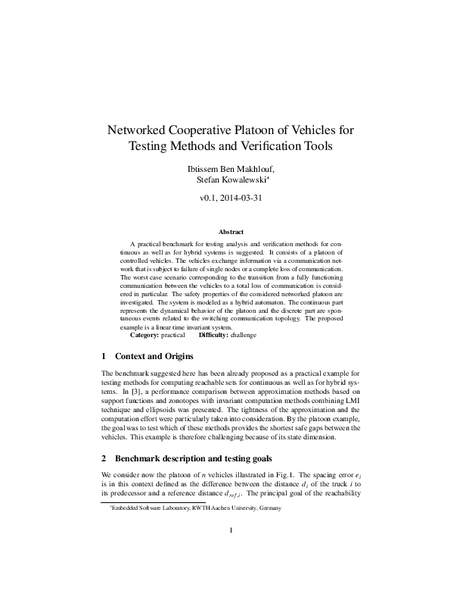Networked Cooperative Platoon of Vehicles for Testing Methods and Verification Tools
practical benchmark for testing analysis and veri?cation methods for con-tinuous as well as for hybrid systems is suggested. It consists of a platoon ofcontrolled vehicles. The vehicles exchange information via a communication net-work that is subject to failure of single nodes or a complete loss of communication.The worst case scenario corresponding to the transition from a fully functioningcommunication between the vehicles to a total loss of communication is consid-ered in particular. The safety properties of the considered networked platoon areinvestigated. The system is modeled as a hybrid automaton. The continuous partrepresents the dynamical behavior of the platoon and the discrete part are spon-taneous events related to the switching communication topology. The proposedexample is a linear time invariant system.Category:practicalDif?culty:challenge 1 Context and Origins The benchmark suggested here has been already proposed as a practical example fortesting methods for computing reachable sets for continuous as well as for hybrid sys-tems. In [3], a performance comparison between approximation methods based onsupport functions and zonotopes with invariant computation methods combining LMItechnique and ellipsoids was presented. The tightness of the approximation and thecomputation effort were particularly taken into consideration. By the platoon example,the goal was to test which of these methods provides the shortest safe gaps between thevehicles. This example is therefore challenging because of its state dimension. 2 Benchmark description and testing goals We consider now the platoon ofnvehicles illustrated in Fig.1. The spacing errore i is in this context de?ned as the difference between the distanced i of the truckitoits predecessor and a reference distanced re f ,i . The principal goal of the reachability
Author
